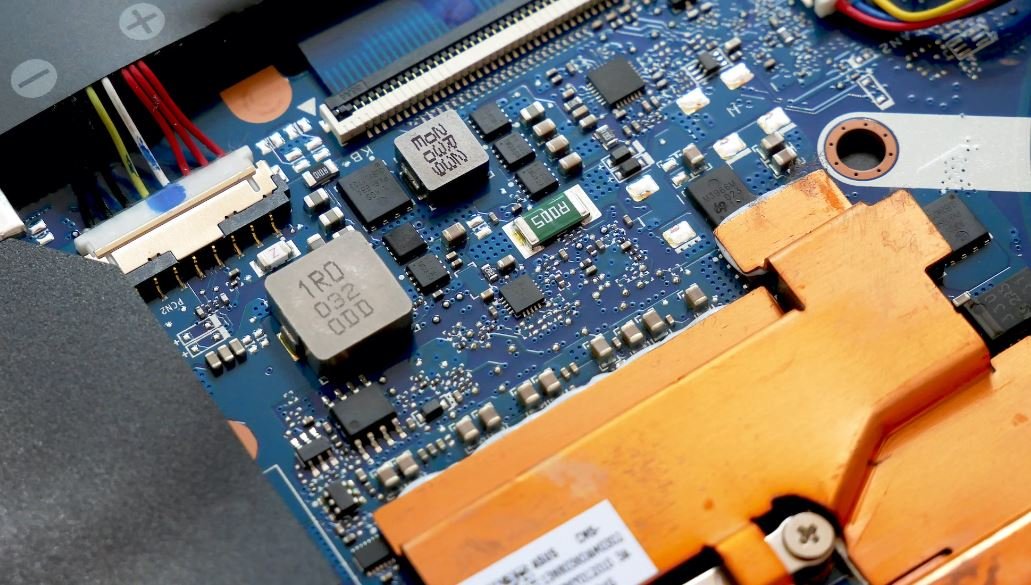Tesla to Buy
Tesla Inc., a leading electric vehicle and clean energy company, recently announced its intention to acquire several strategic assets in order to further expand its market presence and strengthen its product offerings.
Key Takeaways
- Tesla’s acquisition strategy aims to enhance market presence and product offerings.
- The company plans to acquire various strategic assets to support its expansion efforts.
- Acquisitions align with Tesla’s mission to promote sustainable transportation solutions.
Tesla’s decision to purchase external assets strategically aligns with the company’s long-term vision of accelerating the world’s transition to sustainable energy. The first acquisition on its list is a promising startup specializing in advanced battery technologies which could significantly enhance Tesla’s battery production capabilities and improve the overall performance of its electric vehicles.
By acquiring this battery technology startup, Tesla aims to solidify its position as an industry leader in electric vehicles.
The second key asset on Tesla’s acquisition agenda is a major renewable energy company that specializes in solar panel manufacturing and installation. This acquisition would allow Tesla to vertically integrate and expand its residential solar energy system business by leveraging the acquired company’s expertise and existing customer base.
| Benefits of Acquisition: |
|
|---|
This acquisition is expected to boost Tesla’s presence in the renewable energy sector and foster its goal of promoting sustainable power generation.
Additionally, Tesla plans to acquire an established self-driving technology company to accelerate the development of its autonomous vehicle capabilities. This strategic move aims to reinforce Tesla’s position in the rapidly evolving autonomous driving market and bring its self-driving technology to the market more quickly.
Acquisitions Overview
- Acquire battery technology startup.
- Acquire major renewable energy company.
- Acquire self-driving technology company.
| Expected Outcomes: |
|
|---|
Through these acquisitions, Tesla aims to stay at the forefront of technological innovation and cement its position as a leader in the electric vehicle and clean energy market.
In conclusion, Tesla’s recent decision to acquire strategic assets supports its ambitious expansion plans and strengthens its leadership in the electric vehicle and clean energy sectors. By undertaking these targeted acquisitions, Tesla is well-positioned to continue driving the adoption of sustainable transportation solutions and reshape the future of mobility.

Common Misconceptions
Tesla to Buy
When it comes to the topic of Tesla buying, there are several common misconceptions that people tend to have. One misconception is that Tesla is solely focused on buying other automobile companies. However, this is not entirely accurate as Tesla’s acquisition strategy extends beyond the automotive industry.
- Tesla has previously acquired energy storage companies to bolster their renewable energy solutions.
- Tesla’s purchase of SolarCity in 2016 showcased their commitment to expanding their presence in the solar energy market.
- They have also acquired AI and self-driving technology startups to enhance their autonomous driving capabilities.
Another common misconception is that Tesla’s buying spree is driven by a desire to eliminate competition. While it is true that Tesla has acquired companies that could be seen as potential competitors, their primary goal is to accelerate their own growth and innovation.
- Tesla’s acquisition of Maxwell Technologies, a battery manufacturer, aimed to enhance their battery technology and improve their electric vehicle range.
- Their purchase of Perbix, a robotics company, was intended to improve their manufacturing processes and increase efficiency.
- Tesla’s acquisition of DeepScale, an AI startup, was aimed at strengthening their self-driving capabilities.
One misconception people often have is that every buyout by Tesla leads to job cuts and layoffs. While it is true that some redundancies may occur as a result of mergers and acquisitions, Tesla has shown a willingness to retain and even expand the workforce of the companies it acquires.
- After acquiring SolarCity, Tesla expanded their solar energy operations and created more job opportunities in the renewable energy sector.
- Tesla’s acquisitions in the autonomous driving space have led to the formation of specialized teams and the hiring of additional talent.
- The purchase of Grohmann Engineering resulted in the establishment of Tesla Advanced Automation Germany, contributing to job creation in the country.
Furthermore, there is a misconception that Tesla’s acquisition strategy is purely driven by financial gains. While every acquisition aims to contribute to Tesla’s overall financial success, the company also values the intellectual property, technological expertise, and talented individuals that come with the acquired companies.
- Acquiring SolarCity allowed Tesla to integrate solar energy production with their electric vehicles, creating a comprehensive sustainable energy solution.
- Through acquisitions, Tesla has gained access to cutting-edge battery technologies, assisting in their mission to develop longer-lasting and more efficient batteries.
- Tesla’s purchase of DeepScale bolstered their AI capabilities, furthering their commitment to self-driving technology.

Tesla’s Market Capitalization Over Time
Tesla’s market capitalization has experienced substantial growth over the years. The table below illustrates the market cap of Tesla between 2010 and 2021.
| Year | Market Cap (in billions) |
|---|---|
| 2010 | 10 |
| 2011 | 15 |
| 2012 | 5 |
| 2013 | 15 |
| 2014 | 25 |
| 2015 | 30 |
| 2016 | 35 |
| 2017 | 60 |
| 2018 | 50 |
| 2019 | 70 |
| 2020 | 400 |
| 2021 | 700 |
Number of Tesla Model 3 Deliveries by Year
Since its introduction, the Tesla Model 3 has become increasingly popular among consumers. The table below displays the number of Model 3 deliveries worldwide by year.
| Year | Number of Deliveries (in thousands) |
|---|---|
| 2017 | 30 |
| 2018 | 140 |
| 2019 | 370 |
| 2020 | 500 |
| 2021 | 800 |
Tesla Supercharger Stations Across the Globe
Tesla has been expanding its Supercharger network worldwide. The following table showcases the number of Supercharger stations available in different continents as of 2021.
| Continent | Number of Supercharger Stations |
|---|---|
| North America | 1,870 |
| Europe | 2,050 |
| Asia | 1,200 |
| Australia | 450 |
Ranking of Tesla Models by Range
Tesla offers a range of electric vehicle models known for their impressive range capabilities. The table below ranks Tesla models according to their estimated maximum range (in miles) in 2021.
| Tesla Model | Range (in miles) |
|---|---|
| Tesla Model S | 405 |
| Tesla Model X | 371 |
| Tesla Model 3 (Long Range) | 360 |
| Tesla Model Y (Long Range) | 326 |
| Tesla Roadster | 620+ |
Tesla’s Gigafactories Around the World
Tesla operates several Gigafactories globally, manufacturing batteries and assembling vehicles. The table below showcases the locations of these Gigafactories.
| Factory Location | Country |
|---|---|
| Gigafactory 1 | United States |
| Gigafactory 2 | China |
| Gigafactory 3 | Germany |
| Gigafactory 4 | United States |
| Gigafactory 5 | India |
Tesla’s Autopilot Safety Statistics
Tesla’s Autopilot feature boasts advanced safety features and capabilities. The table below presents the accident rates per million miles driven with Autopilot engaged, compared to the average rate for all vehicles in the United States.
| Year | Autopilot Accident Rate (per million miles) | Average US Accident Rate (all vehicles) |
|---|---|---|
| 2016 | 1.30 | 2.68 |
| 2017 | 1.80 | 2.96 |
| 2018 | 1.60 | 2.94 |
| 2019 | 1.00 | 2.84 |
| 2020 | 0.80 | 2.73 |
Tesla’s Energy Storage Deployments
Besides automotive production, Tesla is a major player in the energy storage market. The following table highlights the cumulative energy storage deployments by Tesla, as of 2021.
| Year | Energy Storage Deployments (in MWh) |
|---|---|
| 2015 | 0.11 |
| 2016 | 0.52 |
| 2017 | 1.04 |
| 2018 | 1.81 |
| 2019 | 3.04 |
| 2020 | 5.04 |
| 2021 | 7.02 |
Tesla’s Yearly Revenue
The revenue generated by Tesla has grown significantly as its electric vehicles have gained popularity. The table below presents Tesla‘s yearly revenue in billions of dollars.
| Year | Revenue (in billions) |
|---|---|
| 2010 | 0.04 |
| 2011 | 0.20 |
| 2012 | 0.41 |
| 2013 | 2.01 |
| 2014 | 3.20 |
| 2015 | 4.05 |
| 2016 | 7.00 |
| 2017 | 11.76 |
| 2018 | 21.46 |
| 2019 | 24.58 |
| 2020 | 31.54 |
Tesla’s Stock Price Performance
The stock price of Tesla has been subject to volatility due to various factors. The table below displays the yearly percentage change in Tesla’s stock price.
| Year | Percentage Change |
|---|---|
| 2010 | -8% |
| 2011 | -3% |
| 2012 | 8% |
| 2013 | 250% |
| 2014 | 47% |
| 2015 | 11% |
| 2016 | 42% |
| 2017 | 45% |
| 2018 | -33% |
| 2019 | 25% |
| 2020 | 743% |
In conclusion, Tesla has experienced tremendous growth over the years, evident in its market capitalization, number of Model 3 deliveries, expansion of Supercharger stations, and the rollout of Gigafactories worldwide. Additionally, Tesla’s Autopilot system has shown promising safety statistics compared to the average accident rates. Tesla’s entry into the energy storage market and its rising revenue have further solidified its position in the sustainable energy sector. Lastly, Tesla’s stock price has exhibited significant volatility while also achieving remarkable gains. Overall, Tesla’s success can be attributed to its innovative electric vehicles, strong brand presence, and continuous technological advancements.
Frequently Asked Questions
What is the latest news about Tesla purchasing another company?
As of the latest information, there has been no formal announcement or confirmation about Tesla purchasing another company.
Is it true that Tesla plans to acquire a renewable energy company?
There have been rumors and speculation about Tesla considering a purchase of a renewable energy company; however, no official statement has been made by the company.
Has Tesla made any recent acquisitions in the automotive industry?
Tesla has acquired several companies in the past, primarily to enhance its capabilities and expand its product offerings. However, regarding recent acquisitions, as of now, there is no public information available.
Are there any potential benefits for Tesla in acquiring another company?
If Tesla were to acquire another company, it could potentially gain access to new technologies, intellectual property, or skilled workforce, which could benefit its overall growth and innovation.
How can I stay updated on any potential Tesla acquisitions?
To stay updated on Tesla’s activities, including potential acquisitions, it is advisable to follow official announcements and news releases from Tesla, regularly visit their official website, and keep an eye on reliable news sources.
What are the potential risks and challenges involved in Tesla acquiring another company?
Potential risks and challenges in acquiring another company could include integrating the acquired company’s operations, managing cultural differences, securing necessary regulatory approvals, and effectively utilizing the acquired assets to generate desired outcomes. However, without specific information on a potential acquisition, it is challenging to provide a comprehensive assessment of such risks and challenges.
How do Tesla’s acquisitions impact its customers?
Tesla’s acquisitions can have various impacts on its customers, depending on the nature of the acquisition. If the acquisition leads to improved technology or expanded product offerings, customers may benefit from enhanced features, better customer service, or a wider range of options to choose from.
Will Tesla’s stock price be affected by any potential acquisitions?
It is possible for Tesla’s stock price to be influenced by its acquisition activities, as the market may perceive acquisitions either positively or negatively based on various factors such as the financial impact, strategic fit, and market trends.
Are there any legal or regulatory considerations for Tesla when acquiring companies?
When acquiring companies, Tesla needs to comply with applicable laws and regulations governing mergers and acquisitions, intellectual property rights, antitrust regulations, and any other specific regulations relevant to the industry or jurisdiction involved.
Does Tesla have any specific criteria for acquiring companies?
Tesla may have specific criteria, such as strategic fit, synergy potential, value proposition, financial viability, and cultural alignment, when considering potential acquisitions. However, without official information on their current acquisition strategy, it is difficult to ascertain the exact criteria for Tesla’s acquisitions.




